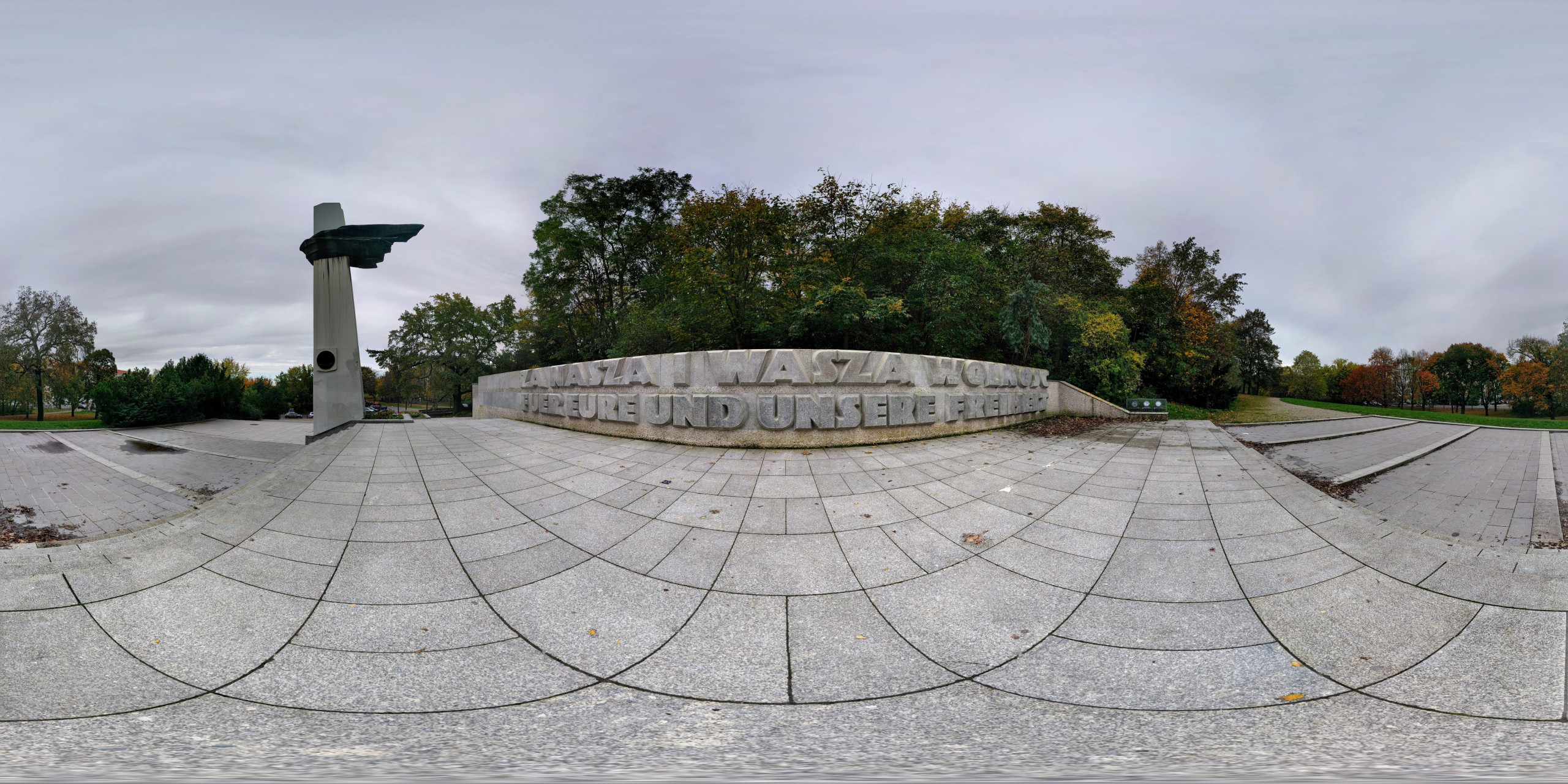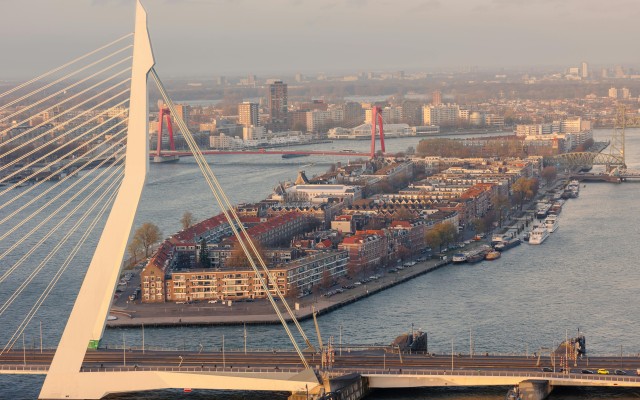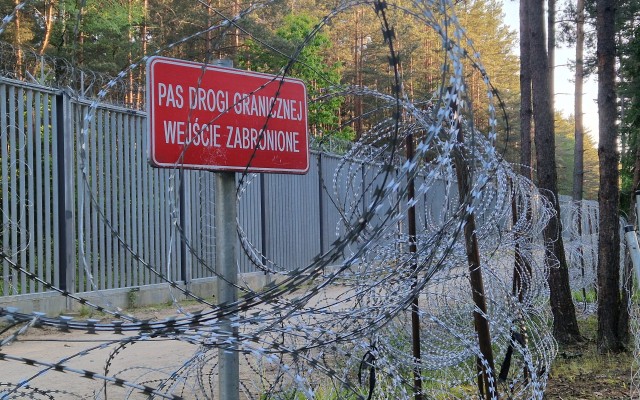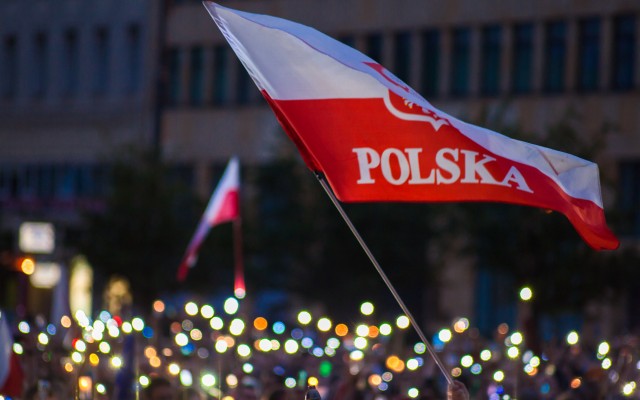
On Refugees
Polish Imaginaries and Practices
by Artur Kula
Published on: May 5th, 2025
Read time: 13 mins
This paper is based on my presentation given in October 2024 at the ISRF Conference in Warsaw. However, given that the issue of refugees and asylum seekers became a crucial part of Polish political debate between October 2024 and March 2025, I have decided to structure my contribution in two parts. The first part is based on my original conference presentation and seeks to depict the historical context of the relationship between Polishness, exile, and foreignness. The second part, an appendix, concerns the last few months and comments on the most recent legal developments. This paper arises from my dual background: as a historian studying Polish nineteenth-century imaginaries and as a lawyer representing activists acting at the Polish-Belarusian border.
Part I
The concept of Polishness remains a focal point of public debate in Poland, permeating political, cultural, and historical discourses. These discussions are largely shaped by collective memory or efforts to construct it, often through historical arguments presented as objective truths, with formal education serving as a primary vehicle for their dissemination.
The narrative of a glorious Polish nation, which has faced various adversities, yet always with dignity, is upheld by certain strands of contemporary historiography. The work of Andrzej Nowak, a professor from Kraków whose monumental History of Poland contains a Polish cosmogonic myth, serves as a prominent example of this right-wing perspective. So far six volumes were published: I (until 1202) in 2014; II (1202–1340) in 2015; III (1340–1468) in 2017; IV (1468–1572) in 2019; V (1572–1632) in 2021; VI (1632–1673) in 2023. According to his narrative, the Polish nation originated with its baptism in 966, making it impossible to speak of Poles or Poland without reference to Catholicism. This fusion of nation and religion, Nowak argues, created a community with distinct, if not unique, characteristics that persist to this day. Using sociologist Michał Łuczewski’s concept, one could describe this as a belief in an ‘eternal nation.' Michał Łuczewski, Odwieczny naród. Polak i katolik w Żmiącej (Toruń 2012). In this vision, ‘we’ have always existed as Poles (or at least for more than a thousand years), and our ancestors – our fathers, grandmothers, and great-grandmothers – were as Polish as we are.
In this narrative, the role of non-Polish elements is minimized. If they are acknowledged at all, it is usually to highlight the supposed virtues of Poles. Examples include Poland’s alleged tradition of tolerance (linked to the Warsaw Confederation of the sixteenth century, which supposedly made the Polish-Lithuanian Commonwealth ‘a state without stakes’) or heroism (exemplified by the rescue of Jews during World War II, which even has an institution dedicated to it: the Ulma Family Museum of Poles Saving Jews in World War II in Markowa). However, this narrative largely lacks a reflection on foreignness, exile, or otherness in its broadest sense.
These observations are not just historical curiosities or critiques of contemporary memory politics. They have significant implications for Polish society today, which is undergoing substantial demographic transformations. The ongoing mass migrations caused by the war in Ukraine and the humanitarian crisis at the Polish-Belarusian border are only part of a broader phenomenon. What is needed, therefore, is a migration policy, an integration model, and a holistic debate addressing these issues. Poles need comparisons, reports, and analyses. However, it is evident that this debate cannot be based solely on data. Its second level, which is equally, if not more, important, is emotional. It plays on public perceptions, hopes, and fears. Currently, it involves discussions of “no-go zones” and the circulation of viral footage. This debate is already taking place, with history playing a key role in it. Often, ‘historical facts’ are invoked as proof that civilization must be defended.
I would like to propose some historical arguments that present Polishness in a different way, by emphasizing the role of Polish exiles, particularly in the nineteenth century. Perhaps these counter-narratives will help us better understand ourselves and create more space for refugees and foreigners in Poland today.
Between Truth and Narrative
Before presenting specific examples, I would like to briefly consider the nature of history itself. History is a social science that constructs narratives about the past. We do not have direct access to the latter. Instead, we rely on historical sources. On this basis, we (re)construct historical events and processes. However, this does not mean embracing total relativism. Historical sources provide a framework within which historians operate. Nonetheless, the conclusions they draw and the narratives they present often differ. Sometimes they complement each other, while at other times they are entirely contradictory. No single narrative has a monopoly on the truth.
The competition between historical narratives and the necessity of selecting among them is often referred to as the politics of history or memory politics. Formal education plays a crucial role in shaping collective historical consciousness. In Poland these typically adhere to a conservative model that centres on the Polish nation and emphasizes moments of national triumph, such as the Battle of Grunwald or the victories of the Polish Hussars. Literary education further reinforces this narrative, drawing heavily on the works of Henryk Sienkiewicz (1846–1916) whose novels were written ‘to lift up the hearts.’ The quotation comes from his own words concluding the Trilogy, often considered his opus magnum. His works are frequently treated not as nineteenth-century fantasies about the past, but rather as historically accurate representations of specific events.
The early twenty-first century saw attempts to reform Polish historical education, including the introduction of courses like ‘History and Society’ and the establishment of cultural institutions such as the Museum of the Second World War in Gdańsk and the POLIN Museum of the History of Polish Jews, which sought to provide a more nuanced perspective on Central European history. However, these efforts were curtailed by right-wing government policies that reinforced national-patriotic interpretations of history, fostering a climate in which historical narratives served political ends. These shifts did not provoke much public resistance. This is not surprising; in addition to institutional changes, grassroots initiatives, often dominated by right-wing communities, also played a role. The left attempted to offer a counter-narrative but with limited success.
Reclaiming Polishness
The humanitarian crisis of 2015 revealed a strong correlation between nationalist historical consciousness and opposition to refugees, despite Poland’s limited direct involvement in the crisis. Historical references to figures such as Jan III Sobieski and the Battle of Vienna reinforced the notion of Poland as a bastion of European civilization – a bulwark of Christendom against perceived external threats.
Today, similar rhetoric persists, as evidenced by the construction of a border fence at the Polish-Belarusian border, ostensibly to protect the nation from an influx of migrants. Fear plays a key role in this debate. While the argument of a potential Russian threat has become more prominent, the border fence was initially framed as a defence against a ‘deluge’ or ‘waves’ of migrants. The presence of even a few thousand people from Middle Eastern countries was portrayed as a serious threat to Polishness.
However, these discussions often leave the concept of Polishness undefined. This is a mistake. National identities are not immutable. They are historically constructed. Most emerged in the nineteenth century as political entities that replaced former monarchical and aristocratic structures. Consequently, the origins of Polishness should be examined within this historical framework, recognizing that national myths and symbols, such as the baptism of 966, are fluid and contingent.
Rediscovering the history of the nineteenth century and the nation-building process associated with it is therefore essential. This period was not only about heroic national uprisings but also about the gradual inclusion and empowerment of previously excluded groups. Understanding this history could help present a more progressive vision of Polishness. For now, I propose to briefly focus on three examples: the impact of statelessness on Polish identity; the significance of the Great Emigration; and the development of national literature.
The nineteenth century in Polish history is defined by the absence of an independent state, spanning from the third and final partition of the Polish-Lithuanian Commonwealth in 1795 to the re-establishment of Polish sovereignty with the founding of the Second Polish Republic in 1918. Political efforts aimed at national restoration took place both within the partitioned territories and in exile, fostering diverse expressions of Polish identity. Despite the existence of extensive autonomies, particularly in the second half of the century, and the presence of semi-independent statehoods between 1807 and 1846, the ultimate goal remained unchanged: regaining full self-determination.
In historiography, this period of statelessness is often described using the term ‘Polish lands,’ though its meaning is ambiguous. It can refer to the pre-partition borders, to all territories inhabited by people who identified as Polish, or to any lands that historically belonged to the Kingdom of Poland and the Grand Duchy of Lithuania. However, such notions should not obscure the constant precarity and ever-shifting legal and political realities that Poles faced throughout the nineteenth century. Polish identity was shaped by a pervasive sense of uncertainty.
One of the most striking examples of this uncertainty was the period of the so-called Great Emigration, triggered by the collapse of the national uprising in 1831. The elites – fearing tsarist persecution – relocated primarily to France, which became the centre of national development for nearly two decades. However, this was neither a simple nor a linear process. The aristocracy, convinced of its superiority and a mission derived from its noble lineage, frequently clashed with democratic organizations. The latter were largely composed of officers stationed by the French authorities in various institutions across the country. In its 1836 manifesto, the Polish Democratic Society declared: ‘We will not sacrifice the happiness of twenty million for the sake of a privileged few, and the shedding of fraternal blood will fall only on the heads of those who, in their ignorance, place their own selfish interests above the common good and the survival of the Fatherland.’ Meanwhile, Adam Jerzy Czartoryski, a leader of the aristocratic faction, supported French plans to send some Polish refugees to Algiers to assist French forces. This led to him being labelled an ‘enemy of Polish emigration’ by the vast majority of exiled Poles. Democratic organizations, however, did not confine their efforts to France. They sent emissaries across the partitioned territories to spread national ideas. Moreover, Polish exiles were not alone in their struggles. Other stateless nations faced similar fates, leading to expressions of solidarity, such as the slogan ‘For our freedom and yours.’ In other words, the nations of that era fighting for sovereignty and independence were, in many ways, refugee nations.
The Great Emigration also included artists who produced foundational works of Polish Romanticism – works that continue to shape the Polish collective imagination today. The compositions of Frédéric Chopin and the literary works of Adam Mickiewicz and Juliusz Słowacki, among others, were meant to educate and inspire future generations. Notably, exile is a recurring theme in their works. This motif predates Romanticism. Even Mazurek Dąbrowskiego (the Dąbrowski Mazurka), Poland’s national anthem written in the 1790s, was inspired by the experience of exile. Its opening verse offers a glimmer of hope: ‘Poland has not yet perished, as long as we live.’
To the South of Lampedusa
Polish identity, historically shaped by exile and the aspiration for self-determination, was fundamentally built on hope and solidarity with other displaced nations struggling for sovereignty. To reject this legacy of empathy would be to deny a crucial aspect of Polish history.
In this contribution, I have only outlined the historical arguments, indicating where they can be further explored. In reclaiming Polishness, we must not lose sight of the regional perspective. Today, just as in the nineteenth century, Poland’s situation is not unique. The challenges of demographic shifts and necessary redefinitions of identity are at least European in scope. The construction of Fortress Europe extends far beyond the fence at the Belarusian border. It is not merely a matter of physical infrastructure.
I propose that the ongoing Polish debate, one that will only intensify, should connect the local with the regional. It should highlight the pivotal role of the refugee experience in shaping Polishness while emphasizing the need for transnational action. This perspective is already emerging in popular culture. Polish rapper DonGURALesko, for example, draws parallels between the plight of refugees in the Mediterranean and those at the Polish-Belarusian border. See here or here [access: 13.03.2025].
Part II - Appendix
One week after the ISRF Conference, the Polish government announced a new migration strategy. A key element of this policy was the decision to ‘suspend’ the right to asylum. This proposal was eventually formalised into a government bill, which passed with overwhelming support: on 21 February 2025, nearly 85% of MPs voted in favour, and on 13 March 2025, the Senate endorsed it just as enthusiastically. On 26 March 2025, the President signed the act. On the following day, the government issued a regulation suspending the right to asylum ‘at the border with Belarus.’ Regulation of the Council of Ministers of 27 March 2025 (Dz. U. z 2025 r. poz. 390).
While the bill worked its way through parliament, various NGOs, the UNHCR, bar associations, and even the Senate’s own chancellery published explicitly critical opinions. The UNHCR’s opinion is available in English here [access: 13.03.2025]. They observed that the proposed bill violated Polish constitutional provisions as well as international agreements, such as the 1951 Refugee Convention.
For the legislature, however, these voices were irrelevant. The current government, while presenting itself as a restorer of the rule of law, introduced legislation that fundamentally undermines it. Nonetheless, the bill was also supported by public opinion, with polls indicating that over 50% of Poles favoured suspending the right to asylum.
As I mentioned in the main part of this article, the Polish debate on refugees is increasingly dominated by the argument of the Russian threat. Consequently, the fence at the Polish-Belarusian border is no longer just a symbol of anti-migrant policies but is now being framed as part of military preparations against potential Russian aggression. I assume that this shift has also contributed to the soaring support for measures such as the government’s ban on the right to asylum.
The argument of the Russian threat does not invalidate my findings from the ISRF paper – quite the contrary. The current European climate, shaped by security concerns, reinforces nationalistic narratives. This makes it all the more necessary to construct counter-narratives based on solidarity and regional perspectives. The former is particularly urgent given the consequences of the securitization of public discourse. In Poland, one of these consequences appears to be a rise in anti-Ukrainian sentiment. The ongoing presidential election campaign, unfortunately, provides evidence that such exclusionary rhetoric can be an effective tool for candidates seeking to boost their poll numbers.
Nonetheless, these developments are not of teleological nature. It is therefore crucial to resist them and to create alternative narratives, both about Polishness and its relationship with the ‘Other.’
Feature image: Tim Rademacher, CC BY-SA 4.0, via Wikimedia.
Bulletin posts represent the views of the author(s) and not those of the ISRF.
Unless stated otherwise, all posts are licensed under a CC BY-ND 4.0 license.


